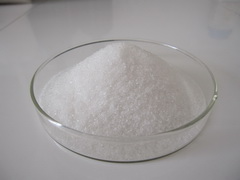The versatile Superabsorbent Polymer (SAP): From hygiene to agriculture
Superabsorbent Polymer (SAP) has widespread applications, from personal hygiene products like baby diapers and feminine hygiene products to agriculture, horticulture, spill control, craft products, air fresheners, and even artificial snow used in film production.
First commercialized in 1978 for feminine products in Japan and bed liners for nursing homes in the USA, SAP has since become a cornerstone for water retention and environmental control applications worldwide.


Also known as water crystals, water diamonds, or soil polymers, SAP is 100% environmentally friendly. In agriculture and horticulture, SAP is invaluable for seed germination, plant bedding, tree and shrub care, root dipping, and as a transplantation aid. It’s particularly effective in container gardening, like window boxes and hanging baskets. By reducing water depletion, SAP can lower irrigation needs by up to 50%, improve plant health and growth, and mitigate soil erosion and runoff, contributing to the quality of natural water sources such as lakes and rivers.
SAP is trusted by the U.S. Forestry Service and recommended by publications like Southern Living Magazine and HGTV for its effectiveness.
Also known as water crystals, water diamonds, or soil polymers, SAP is 100% environmentally friendly. In agriculture and horticulture, SAP is invaluable for seed germination, plant bedding, tree and shrub care, root dipping, and as a transplantation aid. It’s particularly effective in container gardening, like window boxes and hanging baskets. By reducing water depletion, SAP can lower irrigation needs by up to 50%, improve plant health and growth, and mitigate soil erosion and runoff, contributing to the quality of natural water sources such as lakes and rivers.
SAP is trusted by the U.S. Forestry Service and recommended by publications like Southern Living Magazine and HGTV for its effectiveness.

The science behind SAP’s absorption power
Our patented SAP stands out as the highest-absorption capacity polymer on the market, delivering the precise gel consistency that WaterGelSacks™ need to perform effectively across all applications. As a hydrogel with cross-linking capabilities, SAP absorbs water through hydrogen bonding with water molecules, reaching up to 99.9% water content in just 3 to 4 minutes.
The material’s swelling and absorption capacity are defined by the degree and type of cross-linking, with lower-density cross-linked SAP exhibiting a greater absorbent capacity, softer texture, and a more gel-like consistency—ensuring optimal function in flood prevention and water containment applications.

